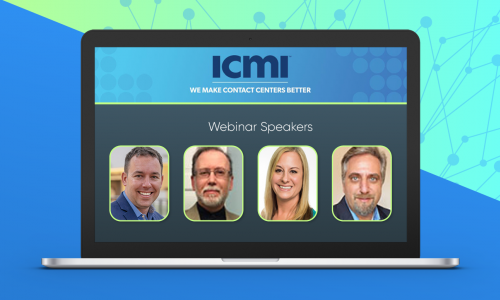For instance, over just the past three years there’s been a 25 percent jump in the use of online communities for customer support, according to Forrester Research. Meanwhile, the use of chat support options by customers has risen 24 percent while the use of web self-service tools has risen 12 percent.
Clearly, customers are willing and interested in using a variety of channels to obtain answers to their questions about products and services, including self-service technologies. Nevertheless, customer experience breakdowns are commonplace across many of these channels. This is particularly common during channel handoffs when a customer is transitioning from one channel (web self-service) to another (live chat) for support.
It can be frustrating for a customer when they have to repeat the nature of a support problem with an associate or re-identify themselves. Instead of bringing the conversation back to square one and aggravating the customer, contact center associates can make use of the customer data being generated across various touchpoints to deliver personalized and relevant support.
There are rich opportunities for companies to deliver contextual customer support experiences by leveraging the full range of available customer data. This includes information that can be gleaned and used in real-time regarding customer interactions in different channels (voice, mobile, web, social, chat, email) as well as transactional, sentiment, demographic, and other accessible data.
There are also rich opportunities for using CRM data that can inform decision makers about which products a customer currently has, how valuable a particular customer is, which stage of the life cycle a customer is in, etc.
But what does it take to get to this state? And perhaps more importantly, are companies committed to making the investments necessary to deliver optimal customer experiences?
Not yet, at least according to the results of a Forrester Research study on the topic. Although 93 percent of executives consider customer experience a top priority, just 37 percent of companies have earmarked a dedicated budget for customer experience initiatives.
Getting started

Fortunately, there are low-cost approaches that companies can take to test the use of customer data and analytics to deliver the type of personalized and relevant support that can strengthen loyalty and optimize business outcomes. A good starting point is to pick a particular area of support (e.g., chat) and run a pilot to determine how processes and support can be improved to generate better customer experiences.
For instance, analysis of customer sentiment and feedback shared with a bank may reveal that higher-than-normal shares of customers are dissatisfied with customer support between the hours of 5 p.m. and 9 p.m. on weeknights. A deeper dive reveals that a high percentage of these customers are reaching out to the contact center via SMS to obtain information about their balances after hours. However, contact center associates don’t have access to account information and are unable to help them.
Organizational leaders can act on these insights and take steps to ensure that associates are provided access to customer account information on a 24/7 basis. After implementing these changes, customer satisfaction rates and NPS® scores for this 5 p.m. to 9 p.m. time period rose over the next several months.
There are numerous ways that organizations can utilize customer data to gain deeper insights into customer behaviors and customer sentiment. These insights can then be used to deliver on customer expectations and drive improved outcomes. In fact, the two of us will be leading a workshop at Call Center Week where we will explore contact center realities along with opportunities for using structured and unstructured data to help foster customer engagement. To register for the event, click here.
Like this? Subscribe to our blog here.
Also, check out the most recent issue of our e-newsletter.







